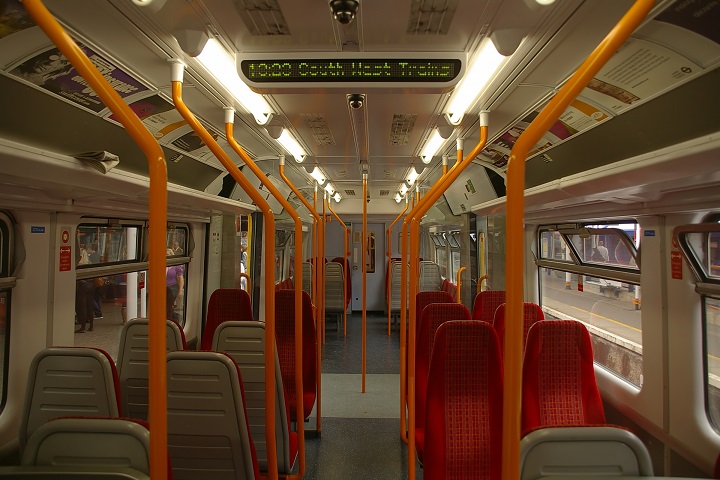The Class 455 is a four-carriage train that is used on our mainline suburban network. We have 84 of these trains. You'll see Class 455 trains operating between London Waterloo and:
- Dorking
- Chessington South
- Guildford (via Epsom, via Cobham & Stoke d'Abernon, and via Woking (Sundays only)
- Woking (stopping services)
- Hampton Court
- Shepperton (via Kingston and via Twickenham)
- Strawberry Hill (via Kingston and via Twickenham)
- Reading
- Windsor & Eton Riverside
The Class 455 came into service in 1987, and was built by British Rail Engineering Limited. These trains have four carriages, and replaced many of the Southern Railway "4SUB" trains used before. They can operate "in multiple", which means that two trains can run together as an eight-carriage train. They also worked with our Class 456 trains to form six- and ten-carriage trains.
Our new Class 701 trains - which are currently being built - will replace our Class 455 trains in the future. Fitted with some of the latest technology, including live passenger information systems, these trains will bring more comfortable journeys, extra trains, and quicker journey times.

Train plan

How many seats does a Class 455 have?
A Class 455 has 244 Standard Class seats. There is no First Class. 30 seats are designated as priority seats.
How many cycles can a Class 455 carry?
A Class 455 can carry 4 cycles. They can't carry tandem bicycles or trailers. Find out more about our cycle policy.
How many wheelchair users can travel on a Class 455?
Four wheelchair users can travel safely on a Class 455.
What accessible features does the Class 455 have?
Our Class 455 trains have:
For physically disabled people:
- Power-operated external doors, which contrast with the rest of the train. At low platforms wheelchair users may have some difficulty reaching the door open buttons from outside the train.
- Large external door operation buttons, with what the button does clearly marked in English and Braille. They contrast with the door and light up when active.
- There are no lavatories on board these trains.
- Call for aid buttons near each wheelchair position, with direct communication to the guard.
- An on-board ramp with locking pins for the train that the crew are trained to deploy. The gap between the train and platform can often be difficult for wheelchair users and customers with limited leg and upper body strength. Assistance joining and leaving the train is available from the crew.
For D/deaf, hard-of-hearing, and sound-sensitive people
- Assistance dogs are welcome on board but must be kept on a lead.
- An on-board audiovisual announcement system in English. This system issues the stations where the train stops, as well as security and safety messages. The system can be overridden by the on-board crew.
- Our crew all carry smartphones, which you can use for alternative forms of communication if needed.
For blind, partially-sighted people, and photosensitive people
- Assistance dogs are welcome on board but must be kept on a lead.
- Large external door operation buttons, with what the button does clearly marked in English and Braille. They contrast with the door and light up when active. A chime will also sound when the doors have been activated, and an alarm will sound when they are closing.
- Unfortunately the nature of how our trains are powered means that we can't guarantee lighting will be flicker-free. Warm fluorescent lighting is used throughout. There are no diffusers on the lights.
For Autistic, anxious and Neurodiverse people
- Assistance dogs are welcome on board but must be kept on a lead.
- We welcome anxious or nervous travellers to try the train with us before making a journey. Our ambassador team will happily support individuals or groups at a station, navigating buying tickets, boarding trains, travelling, and seeking help if you need it.
- Our crew all carry smartphones, which you can use for alternative forms of communication if needed.
For people with severe allergies or who are immunocompromised
- These trains are cooled with natural ventilation.
- You're welcome to use a safety/particulate mask on board if you need to.
Header image: Peter Skuce - Own work, Public Domain, Link
Interior image: mattbuck (category) - Own work by mattbuck, CC BY-SA 3.0, Link




